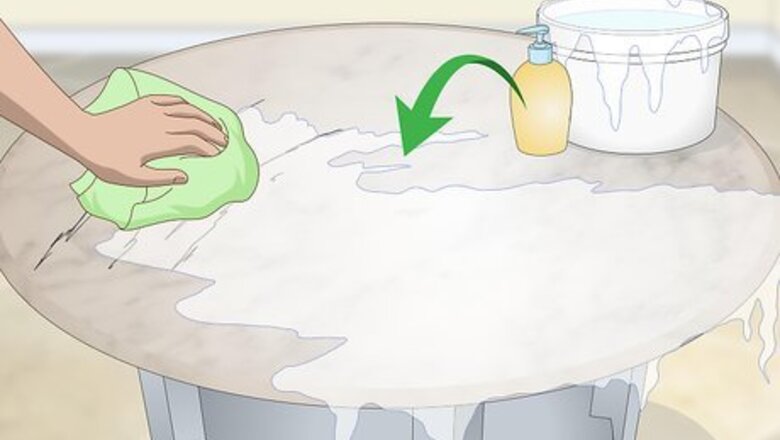
views
Wet-Sanding the Marble
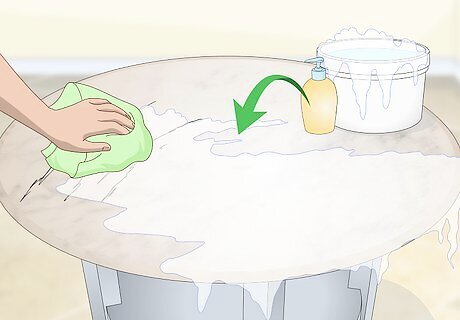
Clean and dry the marble surface. Dip a soft cloth in a sudsy mixture of mild dish soap and water, then wring out the cloth to remove excess water. Wipe down the entire area where the scratch is located, ensuring there are no dust, dirt, crumbs, or anything else left on the marble. Then, use a second cloth dampened with just water to wipe away any soapy residue, and dry the marble with a third, dry cloth. If there are any dirt or crumbs on the surface of the marble, you'll grind it in when you sand it, and you'll end up scratching the marble even worse. Even though you'll wet the marble before you sand it, drying it first will ensure there's no soap or dirt residue left behind to scratch the marble.

Wet the surface of the marble with a spray bottle. Fill a clean spray bottle with plain water, and spray a light coating of water over the marble. By wetting the marble before you sand, you’ll give the dust something to stick to, so it will form a paste rather than flying into the air where you could inhale it. The water will make the marble look darker, but it shouldn’t leave permanent marks unless you leave pools of water standing for a few hours. If you do opt to dry-sand the marble, wear protective eye wear and a dust mask with a respirator so you don't breathe in particles of stone dust.

Attach a 1000-grit sanding disc to a power sander. The sandpaper should fit easily onto the sander, but make sure the fit is secure. If the sandpaper is folded up on the edges, you could scratch the marble. You can buy sanding discs wherever home improvement supplies are sold. It’s possible to do this job by hand if the scratch is very small and you don’t want to use a power tool. Just sand lightly in a circular motion, using 1000-grit sandpaper. If you don’t have a power sander, purchase a pad that fits into the hole on your drill, then attach the sandpaper to the pad. Deeper scratches might require starting with a coarser-grit sandpaper and working up to 1000-grit. However, if that’s the case, it’s usually a good idea to get a professional opinion, rather than risking damage to your marble surface.

Turn on the sander and sand around and over the scratch. Place the surface of the sandpaper against the marble, but do not press down hard on the sander. The weight of the tool and the motion of the sandpaper will be enough to buff away shallow scratches or etch marks. Move the tool in a slow circular motion, and focus on one small area at a time. If you press down too hard on the sander, you could scratch or gouge the marble. Sand until the scratch has been smoothed out.
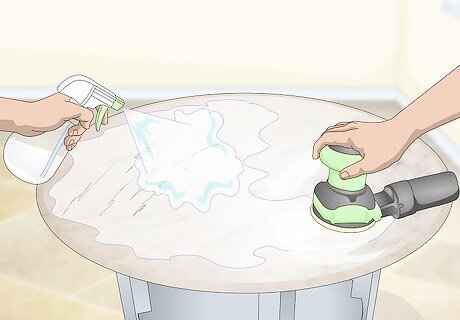
Keep spraying the marble with water as you sand. Periodically as you’re sanding, lift the sandpaper and spray another layer of water over the countertop. This will keep the marble from drying out. If the marble dries out, you could scratch the marble as you’re sanding, due to the paste made from the marble dust.
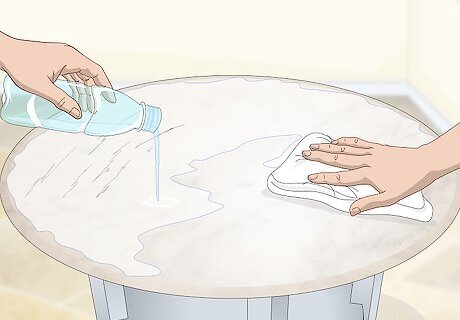
Rinse the marble with clean water. Once you’ve sanded the scratch out of the marble, pour a small amount of water onto its surface and wipe it away with your clean, damp cloth from earlier. Get the area completely clean, because if you leave any of the sanding residue, it could abrade the surface. Once the scratch is gone, you can buff the area to restore its shine.
Buffing it Smooth
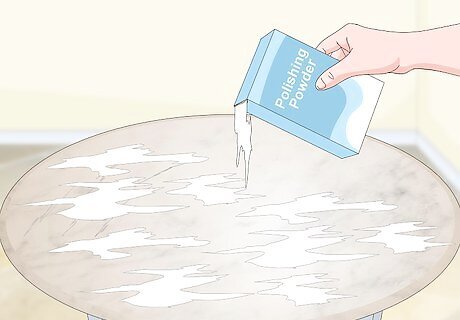
Sprinkle a thin layer of polishing powder over the area you just sanded. While the marble is still damp, shake out a thin, even layer of your marble polishing powder, according to the directions on the packaging. You don’t want the powder to dry out, so if you’re working on a large project, just cover a section of the marble with the powder. Marble polishing powder is usually made from tin oxide, and it’s also used to polish glass and jewelry. In addition, it doesn’t dissolve in water, so you’ll get a smooth, even finish. Marble polishing powder is available at a hardware store or a store that sells supplies for working with stone. Be sure to check the label to ensure it's the right kind to use with your particular type of marble. If you're not sure what that is, consult a marble expert.

Attach a buffing pad to a power sander or drill. Once you’ve spread the powder on the countertop, place a buffing attachment onto your power sander or drill. It should attach in much the same way as the sanding disc, but the surface of the buffing pad will be smooth and soft. If you like, you can buff the countertop by hand, but it will be much easier if you use an orbital sander or drill. If you don’t have a buffing pad, use a damp, soft cloth, like a microfiber cloth.

Turn the sander to low speed and buff the surface of the marble until it’s smooth. Buffing the countertop will be much like sanding it, except you’ll be smoothing the marble instead of wearing it down. Move the buffer in a circular motion while working back and forth across the polishing powder. Keep buffing until you see a smooth, shiny appearance. The polishing powder should be kept slightly damp, but it doesn’t have to be soaking wet. If it seems like it’s getting too dry, give it a light spritz with your spray bottle.

Wipe away the marble polish with a soft, dry cloth. Since the marble polish is made of tiny abrasive particles, it should leave a glossy shine when you’re finished. However, if you leave the residue on the marble, it could etch into the surface over time, leaving new scratches you’ll have to polish out as well. You may not be able to see the residue left behind, but you may be able to feel it if you run your hand across the marble. If the surface feels gritty after you wipe it down, rinse the area with a little water and wipe it again with a new cloth.
Preventing Future Scratches

Keep sharp objects away from anything marble. The easiest way to prevent scratches is to keep sharp objects away from your marble surface. Knives and scissors are obvious culprits, but ink pens, sewing needles, jewelry, and other hard, sharp items can all leave scratches on your marble just as easily. If you have marble countertops in your kitchen, always use a sturdy cutting board when you're chopping food.
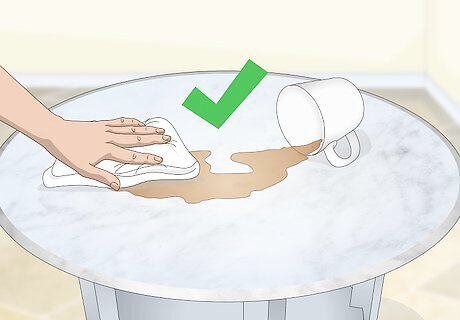
Clean up spills as quickly as possible. If you accidentally spill something on the counter, especially something acidic like coffee, juice, or wine, wipe it up immediately with a soft cloth. Acidic spills can etch the surface of the marble. Always wipe up any spill on your marble immediately, whether it's acidic or not. Even water can cause discoloration on your marble if it pools in one place for too long. If the stain sets in, you may be tempted to scrub the marble, which can lead to scratches.

Use mild dish detergent and water for general cleaning. Abrasive, harsh household chemicals can etch the stone permanently, leaving marks that will emphasize the appearance of any scratches and change the color of the marble. Wipe your counter down with a damp rag daily, and use soap and water as needed for deep cleaning. You'll probably need to do this about once a week or more depending on how often you cook. Try a solution of diluted vinegar (a 1:5 ratio of vinegar to water) for an easy household marble cleaner. Dish detergent is a good option for cleaning marble.

Opt for a paste made from baking soda and water for gentle stain remover. If you do get a stain on your marble, add a little water to some baking soda until it forms a paste. Spread a thick layer of the paste directly on top of the stain. Cover the area with a bowl or a sheet of plastic wrap and leave it for about 24 hours, then rinse it away with cool water. Do not scrub the paste away, or you could scratch the marble.



















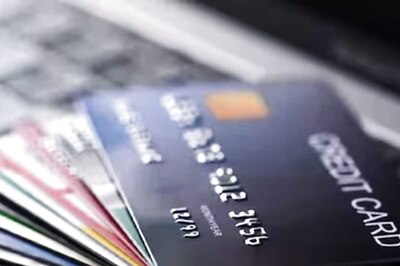
Comments
0 comment